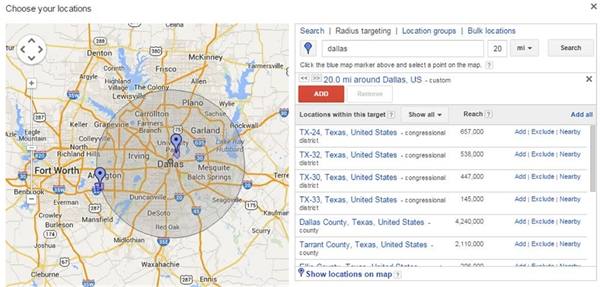What do you do when your SEM campaign is not delivering the results you intended? You were hoping for more leads or conversions, yet it seems the campaign is spending its budget but not delivering a return on all that investment.
It's time for campaign optimization—when you determine what needs to be done to help your ailing campaign.
You can begin by reviewing the various elements of your campaign, and then take steps that combat the downward spiral and give your campaign the lift it needs to perform.
Nine Elements to Review or Modify
1. Keywords
Keywords are the heart and lifeblood of a campaign. If your campaign is not driving the intended traffic, one of the first places to look is your keywords.
Don't waste money on nonconverting keywords. Pause underperforming keywords or keywords with a low click-through rate (CTR). Doing so will allow you to allocate your budget to better-performing keywords.
The right keywords can make a campaign run efficiently and reduce cost per click (CPC).
2. Match Type
If your keywords have a low CTR and they are delivering irrelevant traffic, you may want to use a more restrictive match type.
Although broad match and broad match modifier match types have their place and can deliver additional traffic, a more restrictive match type, such as phrase or exact, can help to reduce irrelevant traffic and deliver more qualified leads.
3. Search Query Report
You should regularly review the search query report, which shows what keywords or phrases searchers are actually using to find your ads. Both Bing and Google provide this report.
The search query report can help you determine which negative keywords to add to your campaign. You can also mine the report to determine what new keywords you may want to add.
Once you have those new keywords, you may also want to create ad groups targeting those keywords.
4. Targeting
Whatever your business, you have to make sure you are targeting the correct audience. The beauty of SEM is that you can determine precisely what geographic areas you want to target. If you are not getting the leads you want, review your targeting.
When you initially created your campaign, you may have set the targeting too wide or you may have created a radius too small, and so you are not getting the traffic you intended.
5. Campaign Structure
When structuring your campaign, follow the advice both Bing and Google give on their help sites:
- Bing instructs you to create tightly themed ad groups.
- Google suggests you use your website as a guide when planning your campaign, which of course assumes the website has a good structure.
For example, if you are selling shoes for women and men, there should be a link and page for Men's Shoes and another one for Women's Shoes; your campaign should then have a Men's Shoes ad group and a Women's Shoes ad group.
The proper way to create campaigns is to segment your ad groups instead of lumping all ads and keywords into one group or creating poorly themed groups. Tightly themed campaigns allow you to send ads directly to their respective landing pages versus sending all ads to the homepage of the website.
Having a good campaign structure can help to improve quality score, and it can help reduce the time spent optimizing an account.
6. Negative Keywords
Good campaign managers embrace negative keywords, which keep your ads from displaying for irrelevant searches.
Employing negative keywords in a campaign can help turn around an underperforming campaign; they can also help a good campaign perform even better.
Review your campaigns to see where the use of negative keywords can help to reduce impressions for irrelevant searches. Doing so is now even more important because of the use of close variance keywords in both Google and Bing.
7. Ad Copy
Your ads need to resonate with your audience. Accordingly, ask yourself these questions when writing your ad:
- What will cause someone to choose my ad over a competitor's?
- What can I say in my ad that would separate me from the other ads on the page?
The answers will provide you with your competitive advantage.
You determine good ad copy by testing. Campaign managers constantly test versions of ads to determine which ones connect with customers. Ads that convert remain in the campaign; those that do not should be paused.
When creating ads, remember that you are always competing with other advertisers.
8 Ad Extensions
Want to deliver more excitement to your ads? Use ad extensions, which can bring new life to your ads and help to improve your ad's CTR.
Both Google and Bing offer the following extensions: location, call, and site links. Google provides additional extensions, such as review, apps, and product extensions.
Extensions can give your ads a larger presence, allowing your users to interact with the ad in ways that were not possible before.

Example of ad extensions
9. Bidding
You should of course review your bidding strategy, but far too many people start here... without first adjusting the previous items mentioned in this article. Once the other items have been addressed, you can decide whether your bidding needs to be adjusted.
A Good Start
Of course, if your SEM campaign is not driving the results you want, there are many other items to consider or adjust, such as landing page relevancy and tracking and reviewing analytics.
Taking the actions listed in this article, however, will allow you to jump-start your campaign and help drive the traffic you need for success.




